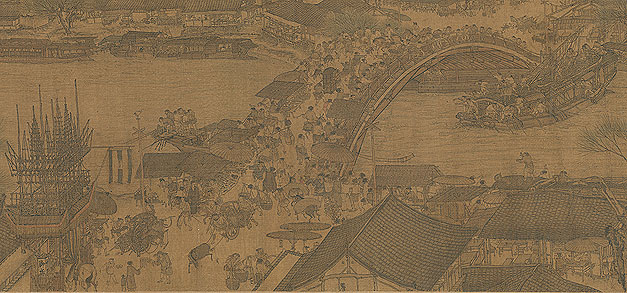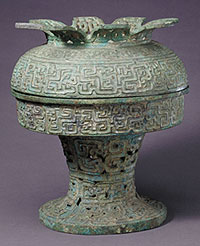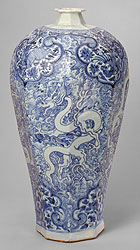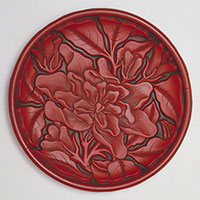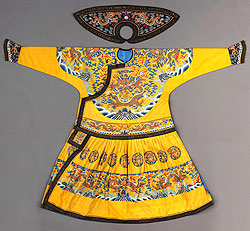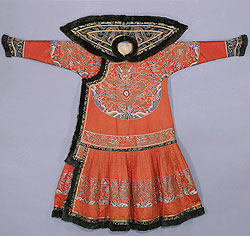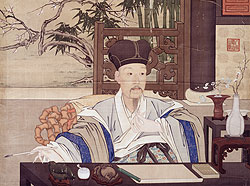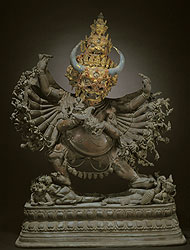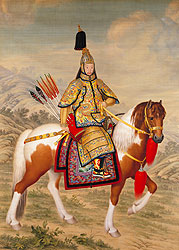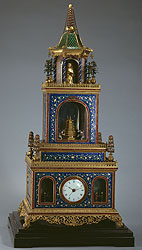Japanese Archaeology and Special Exhibition (Heiseikan) Special Exhibition Galleries
January 2, 2012 (Mon) - February 19, 2012 (Sun)
In 2012, which marks the 40th anniversary of the normalization of relations between Japan and China, the Tokyo National Museum is holding an exhibition of masterpieces from the Palace Museum, Beijing.
The site of the Palace Museum, Beijing, was formerly the residence of 24 Chinese emperors from the Ming-dynasty Emperor Yongle to the Qing-dynasty Emperor Puyi. In addition to its own glorious architecture, it houses a collection of more than 1.8 million artifacts.
This magnificent exhibition consists of a selection of 200 masterpieces from that collection and is split into two sections. The first section features the simultaneous display of 41 Song- and Yuan-dynasty calligraphic works and paintings not previously shown outside the palace (some works for a limited period), as well as masterpieces of court and literati paintings, must-see works by three of the best calligraphers of the Song period, and masterworks of calligraphy by Yuan-period literati. Boasting a tremendous array of fabulous bronzes, jades and other artifacts, this lineup can be described as a defining exhibition of the Palace Museum. The second section centers around four portraits of Emperor Qianlong, whose reign marked the Qing dynasty’s golden period. This section seeks to understand the abundance of world views held in the Qing dynasty. There is also an area that attempts to recreate, using existing artworks, a portrait of Emperor Qianlong in which he is depicted surrounded by various masterpieces.
We hope you will take the opportunity to come and see this extraordinary encapsulation of the masterpieces of Chinese civilization.
* Please note that some works will be exhibited for a limited period.
* The Palace Museum Virtual Reality Program ”The Forbidden City: Palace of the Emperors – Special version for the exhibition Two Hundred Selected Masterpieces from the Palace Museum, Beijing” will be on view in Room T5, Honkan. (The Palace Museum Virtual Reality Program (Room T5, Honkan) can be viewed with regular exhibition admission fees.)
News Update: Life along the Bian River at the Qingming Festival, the world-renowned Chinese painting, is traveling abroad.
Legendary Masterpiece Life along the Bian River at the Qingming Festival
[On display from Monday, January 2 to Tuesday, January 24, 2012]
Life along the Bian River at the Qingming Festival (Northern Song dynasty), arguably the most renowned painting in the history of Chinese art, will be included in the exhibition, Two Hundred Selected Masterpieces from the Palace Museum, Beijing.
The exhibit of the painting Life along the Bian River at the Qingming Festival ended on Tuesday, January 24, 2012. From Wednesday, January 25, a printed replica of the work is on display.
Information about Life along the Bian River at the Qingming Festival
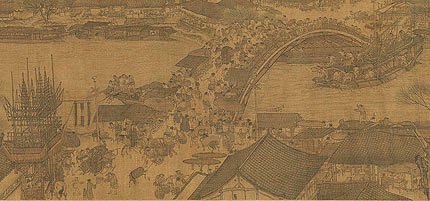
First-Class Cultural Heritage Life along the Bian River at the Qingming Festival (detail)
By Zhang Zeduan, Northern Song dynasty, 12th century, Collection of the Palace Museum, Beijing, China
[On display from Monday, January 2 to Tuesday, January 24, 2012]


